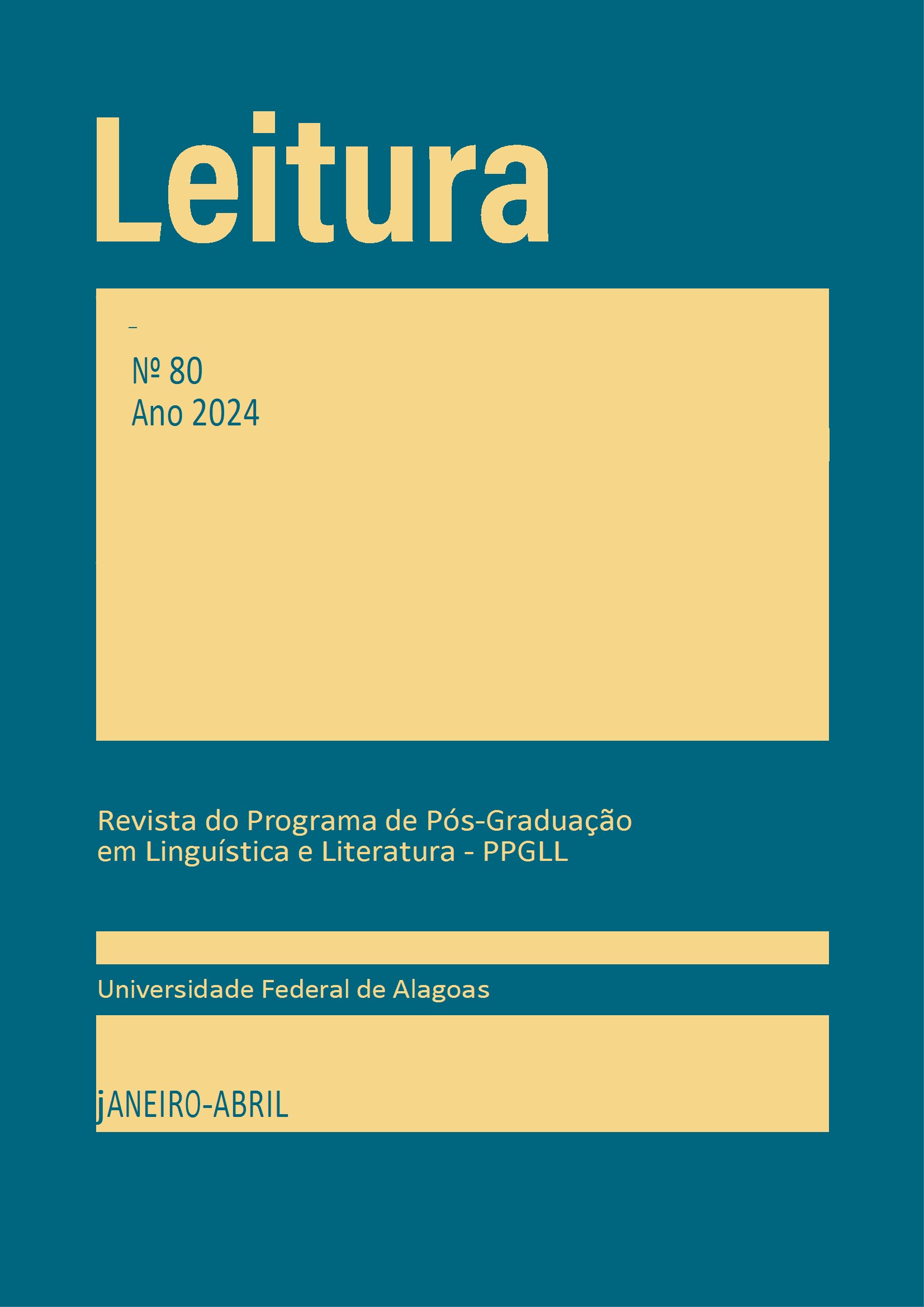Quão complexo é o gênero gramatical?
DOI:
https://doi.org/10.28998/2317-9945.202480.267-277Palavras-chave:
Gênero gramatical, Estudos comparativos, Complexidade linguísticaResumo
Os dois volumes de Grammatical gender and linguistic complexity [Gênero gramatical e complexidade linguística], organizados por Francesca Di Garbo e Bernhard Wälchli, ambos pesquisadores da Universidade de Estocolmo, e Bruno Olsson, pesquisador da Universidade Nacional Australiana reúnem 15 capítulos que discutem diversos aspectos do gênero gramatical em diversas línguas naturais. A maior parte do material compilado nos dois volumes é o resultado do workshop com o mesmo nome realizado entre os dias 20 e 21 de novembro de 2015, pelo Departamento de Linguística da Universidade de Estocolmo, na Suécia, tendo alguns capítulos, no entanto, sido agregados durante o processo de construção dos volumes.
Downloads
Referências
AIKHENVALD, Alexandra Y. How Gender Shapes de World. Oxford: Oxford University Press, 2016. DOI: 10.1093/acprof:oso/9780198723752.001.0001
BROWN, Dunstan; CHUMAKINA, Marina; CORBETT, Greville G. (eds.). Canonical morphology and syntax. Oxford: Oxford University Press, 2013. DOI:10.1093/acprof:oso/9780199604326.001.0001
CARVALHO, Danniel da Silva; BRITO, Dorothy Bezerra Silva de; FARIAS, Jair Gomes de. Notas sobre el aspecto del género gramatical. Revista Argentina de Ciencias del Comportamiento, v. 12, n. 3, p. 1–12.
CORBETT, Greville G. Gender. Cambridge: Cambridge University Press, 1991.
CORBETT, Greville G. Agreement. Cambridge: Cambridge University Press, 2006.
CORBETT, Greville G. Number of Genders. In: DRYER, Matthew S.; HASPELMATH, Martin (Eds.). The World Atlas of Language Structures Online. Leipzig: Max Planck Institute for Evolutionary Anthropology, 2013. (Disponível online em http://wals.info/chapter/30, acessado em 19 de julho de 2020)
CORBETT, Greville G. (ed.). The expression of gender. Berlim: De Gruyter Mouton, 2015. DOI: 10.1515/9783110307337
CORBETT, Greville G.; FEDDEN, Sebastian. Canonical gender. Journal of Linguistics, 52(3), p. 495-531, 2016.
CROBETT, Greville G.; FEDDEN, Sebastian; GRANDISON, Alexandra. Gender: new horizons. Conferência, 2020. 1 vídeo (1h 23min 29s). Publicado pelo canal da Associação Brasileira de Linguística, https://www.youtube.com/watch?v=JmJDV5q7zqQ&feature=emb_title.
DAHL, Östen. The growth and maintenance of linguistic complexity. Amsterdam: John Benjamins, 2004.
DI GARBO, Francesca. 2014. Gender and its interaction with number and evaluative morphology: An intra- and intergenealogical typological survey of Africa. Tese (Doutorado em Linguística), Stockholm University, Stockholm, 2014.
DIXON, Robert M. W. Where Have All the Adjectives Gone? and other Essays in Semantics and Syntax, Berlin, Mouton de Gruyter, 1982. DOI: 10.1515/9783110822939
DRYER, Matthew S.; HASPELMATH, Martin (Eds.). The World Atlas of Language Structures Online. Leipzig: Max Planck Institute for Evolutionary Anthropology, 2013. (Disponível online em http://wals.info/chapter/30, acessado em 19 de julho de 2020)
GREENBERG, Joseph H. 1978. How does a language acquire gender markers? In: GREENBERG, Joseph H. (ed.). Universals of Human Language. Vol 3 – Word Structure. Stanford: Stanford University Press, 1978, p. 47-82.
GRIMM, Jacob. Deutsche Grammatik. Vol. 3. Göttingen: Dieterich, 1831.
HOCKETT, Charles F. A course in modern linguistics. New York: Macmillan, 1958.
JACKENDOFF, Ray; AUDRING, Jenny. The texture of the Lexicon. Relational Morphology and the Parallel Architecture. Oxford: Oxford University Press, 2020.
LUPYAN, Gary; DALE, Rick. Language structure is partly determined by social structure. PLOS one, 5(1), e8559, 2010.
MEILLET, Antoine. Linguistique historique et linguistique générale. Paris: Champion, [1921] 1982.
SAPIR, Edward. Language. An Introduction to the Study of Speech. New York: Brace, 1921.
STEINTHAL, Heymann. Die genera des nomen. Beiträge Zur Vergleichenden Sprachforschung Auf Dem Gebiete Der Arischen, Celtischen Und Slawischen Sprachen, 1(3), 1858, p. 292-307.










